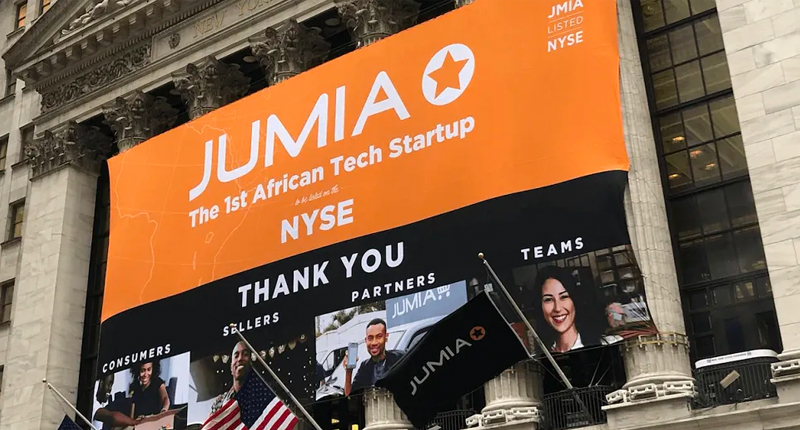2022 was a good year for startups in Uganda. Startups here raised $70m across that year according to Africa: The Big Deal data. Some of the standout deals that year included Rocket Health’s $5 million Series A and Numida’s Series A. If you have followed startup funding, you will notice the use of these terminologies (Series A, Seed round or Pre-Seed). In today’s explainer, CEO East Africa will do a deep dive into the startup funding round stages.
But to understand the dynamics of startup funding rounds, one needs to delve into the essence of what a startup truly means and represents. Noted entrepreneur and startup expert, Paul Graham, provides a striking definition of a startup in his essay. He explains, “A startup is a company designed to grow fast. Being newly founded does not in itself make a company a startup. Nor is it necessary for a startup to work on technology, take venture funding, or have some sort of ‘exit.’ The only essential thing is growth. Everything else we associate with startups follows from growth.”
In expanding on Graham’s innovation-centred and growth-infused definition, we learn that startups are unique entities that aspire to address a gap in the marketplace by introducing a unique product, service, or platform. Startups are inherently built on an innovative idea or a manner of executing it and therefore have immense potential to grow. For this very reason, startups attract investors who are willing to partner in their potential profitability and success.
However, the path to growth and profitability often requires immense financial support that covers everything from the seed stage of product development to scaling manufacturing, to broadening market penetration. This is where the concept of raising funds comes into the picture. Raising funds essentially means gathering the financial resources needed to execute their business plan, grow their operations, and ultimately become profitable.

Given startups’ potential for high growth and the consequent high risk, traditional financial institutions like banks are often hesitant to lend them money. Banks require collateral, which startups usually do not have, and they perceive startups to be a higher default risk due to the uncertain nature of their business models.
This is where venture capital (VC) comes into the picture. Venture capitalists are investors who provide capital to startups in exchange for an equity stake in the company. VCs are more willing to take on the risk associated with investing in startups because they have the potential for a substantial return on investment if the startup succeeds.
The concept of venture capital traces its origins to the post-WWII era. Georges Doriot considered the ‘Father of Venture Capitalism’, established one of the first venture capital firms in the mid-20th century. American Research and Development Corporation (ARDC) aimed to invest private capital in businesses that built technologies for WWII. Although venture capital came to the limelight with the technological boom in the 80s and 90s, the literature reveals instances of venture-style investments even in the early 19th century.
Venture capital funding occurs in stages or rounds, each marking a milestone in the growth trajectory of the startup. The VC funding cycle typically commences with the ‘Seed or Angel round’ and extends up to Series A, B, and C, and later on to growth stage rounds. Each round has a specific purpose and sets the stage for subsequent rounds or an exit strategy.
Early-Stage Funding Rounds.
1. Angel Round
Let’s begin by discussing the very first round that some startups experience – the Angel round. An Angel round is typically the earliest form of funding and is so named because it involves angel investors.
Angel investors are typically wealthy individuals who have the financial capacity to invest directly into a startup in its early stages. Their goal is to help these budding startups take their first steps towards actualizing their business ideas.
Angel investors are often successful entrepreneurs themselves, industry leaders, or high-net-worth individuals who not only bring on board necessary capital but also offer valuable advice, industry connections and mentorship. In return for their investment, angel investors usually receive stakes in the new company.
An Angel round is highly risky for investors because it centres on investing in companies in their infancy with no proven records of success. However, the potential for high returns should the startup succeed is immense, making this a worthwhile risk for these investors.
2. Pre-seed Stage
Following the Angel round is the pre-seed funding stage – a relatively new but increasingly critical aspect within the venture capital ecosystem. True to its name, pre-seed funding is the small investment that helps bring a startup’s concept into existence before the larger seed round comes into play.
Pre-seed funding tends to be low, often less than $1 million and is typically used to finance early operations such as market research, product development, and business plan formulation. The capital usually comes from the founders themselves, friends and family, incubators, and some forward-thinking angel investors.
Contrary to popular belief, pre-seed isn’t about the amount raised; rather, it’s a stage for startups to validate their value proposition, gain market insight, and prepare for the next stage – the seed round.
3. Seed Stage Funding Round
After successfully navigating the pre-seed stage, startups embark on the seed stage. Like a blooming plant, the seed stage represents a time of major growth for the startup.
During the seed stage funding round, startups seek out capital to establish their operations and move towards launching their product or service in the market. It’s at this juncture that many venture capital firms, angel investors, and certain crowdfunding platforms step in.
Given that the startup is still in a precarious position, the seed funding is used to fortify its foundations, foster product-market fit, and even establish a core customer base. Further, it provides the financial muscle necessary for hiring critical staff, improving product development, initiating marketing efforts, and gearing the company towards profitability.
Growth-Stage Funding Rounds.
Series A Funding: After a startup has developed a track record—such as a solid user base, consistent revenue figures, or some other key performance indicators—the next step is Series A Funding. Series A funding is used to further optimize the user base and product offering. Venture capital firms and angel investors are the common investors at this stage.
Series B Funding: Series B rounds are all about taking businesses to the next level, beyond the development stage. Lasting businesses need to transcend the building stage, and expansion is what Series B is all about. Companies that have gone through seed and Series A funding rounds have already developed substantial user bases and have proven to investors that they are prepared for success on a more significant scale.
Series C Funding: By the time a company reaches the Series C stage, it’s a successful business. The main difference between Series C funding and previous rounds of funding is that Series C funding involves more substantial amounts of money. This money goes towards making the company a real player in the market and even expanding operations to other countries.
Quick Fixes
Convertible Notes
Convertible notes present an alternative to traditional equity funding rounds. They are short-term debt instruments that convert into equity, usually subsequent to an equity financing round. The advantage of convertible notes lies in their simplicity; they allow startups to raise capital quickly without the need for lengthy and distracting negotiation or valuation.
Convertible notes are often used in seed rounds or bridge financing for they serve as a temporary solution until the next equity round, or until the company is bought out or liquidated. The key characteristic of a convertible note is its ability to be converted into shares of preferred stock at a later date, typically during a future-priced equity round.
One of the key advantages of convertible notes to startups is their flexibility. They permit the deferment of valuation negotiations to a future date when the business is better positioned to determine a fair valuation. It essentially converts the loan into the equity of the company during the subsequent equity funding round, thus preventing the dilution of ownership control among the current shareholders.
Bridge Rounds
In an ideal world, startups would seamlessly progress from one rung of the funding ladder to the next, with each round adequately providing for its growth needs until the company becomes revenue-generating or self-sustaining. The reality, however, is often far from the ideal. Various factors may necessitate a startup to seek additional funding between formal rounds, leading to what we call bridge financing or a bridge round.
A bridge round is an interim round of financing meant to provide a startup with the capital it needs to get to the next stage, be it moving from a seed stage to a Series A financing, from one Series round to the next, or transitioning to a profit-generating business. It can be secured through various means, such as bank loans, equity financing, or convertible notes.
A bridge round effectively bridges the financial gap, ensuring the startup remains solvent and in operation until the next formal funding round or until it reaches a level of development that would allay the need for further equity financing.
SAFES (Simple Agreements for Future Equity)
Simple Agreement for Future Equity (SAFE) is an agreement between an investor and a company that provides rights to the investor for future equity in the company, similar to a warrant, except without determining a specific price per share at the time of the initial investment. SAFEs were first introduced in 2013 by Y Combinator, a renowned startup accelerator, as a new and simplified model of startup financing to replace convertible notes.
SAFES are designed to give startups the advantage of simplicity and speed, removing the complexities and time-consuming stipulations often associated with convertible notes. Unlike a convertible note, a SAFE is not a loan and therefore does not accrue interest, have a maturity date, or have to be repaid under any circumstance.
A SAFE is, much like its name suggests, simple. It offers a transition from cash to convertible instruments and then to equity, in a streamlined and efficient manner. When a funding round is raised, SAFE investors receive shares at a price per share determined by that financing round’s terms.
Exits or IPOs:
Often viewed as the last stage in raising capital for startups, making an exit or going public through an Initial Public Offering (IPO) is a significant milestone. Going public can provide a substantial return on investment to VCs who saw potential in a startup from its early stages.

Exits can happen through acquisitions where another firm may acquire the startup, or the startup may opt for a merger. The exit strategy offers liquidity to the investors, allowing them to sell their shares and reap the benefits of their trust and investment in the company.
An IPO, on the other hand, is one of the most distinctive indicators of the startup’s growth and success. During an IPO, the company’s shares are sold to institutional investors, and then they are available for the general public to purchase on the open market.
Venture capital is a critical component of the startup world. It provides the necessary financial backing that startups need to get off the ground and scale. Understanding the nature and progression of VC funding rounds, from seed to Series D, and even exits or IPOs is crucial to navigating this complex but rewarding landscape.
It’s important to note that while VC funding can be exceptionally beneficial, startups and entrepreneurs should fully understand the terms, conditions, and potential outcomes that come with each round. Each company’s path will be unique, and the dynamics of the funding rounds depend on various factors like market dynamics, the business model, the potential for growth, and the entrepreneur’s vision for the company’s future.
